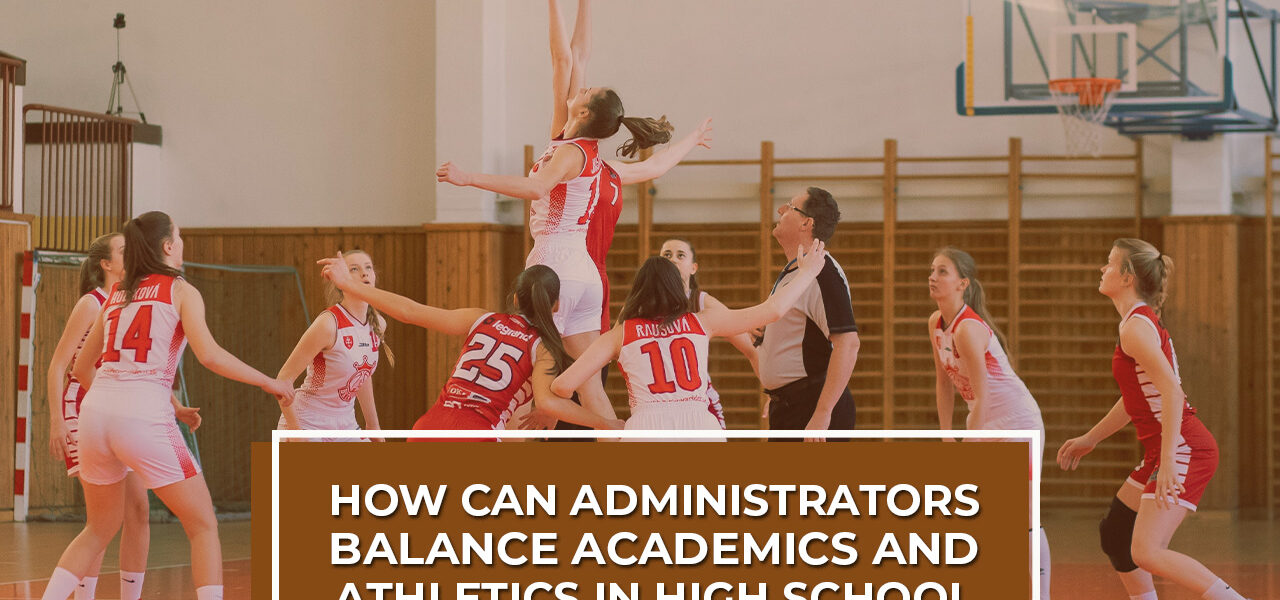Balancing academics with athletics in high school can be challenging for administrators. However, it is important to ensure that students can pursue academic and athletic goals without compromising either. Administrators must create a student athletic advisory committee that allows student-athletes to reach their full potential in both areas while maintaining the integrity of the school’s academic standards. This article will discuss how administrators can balance academics and athletics in high school.
Administrators should work with athletic trainers in high schools to create a balance between academics and athletics. By establishing clear expectations, providing academic support, utilizing the right technology, conducting regular reviews, and encouraging student-athletes to study together, administrators can ensure that their school’s academic standards are upheld while still allowing students to pursue their athletic goals.
Acknowledge the Importance of Education
Administrators should make it clear to coaches, students, and parents that education is a priority in the school. This can be done by having explicit expectations for academic performance, providing incentives for solid grades, or including academics as part of the evaluation process for coaches.
Here are 10 ways to successfully balance those demands:
1) Establish clear expectations:
Establishing clear expectations is one of the most important steps in balancing athletics and academic excellence. Administrators should have rules and regulations around participation in sports and academic activities and any consequences for not following those guidelines. It is also important to communicate clearly between teachers and coaches about what is expected of students.
2) Implement academic support for student athletes:
Another way administrators can balance academics and athletics in high school is by providing a student athletic advisory committee. This could include tutoring, study hall requirements, or other educational assistance. These resources should be available to all students, regardless of athletic involvement. This will help ensure that all students can reach their full academic potential while also participating in sports.
3) Utilise the right technology:
Technology can be an excellent tool for helping administrators maintain academic standards while accommodating the needs of athletes. For example, online classes or course materials can allow students to make up missed classes due to practices or games. Technology can also help administrators track student athletes’ academic performance and ensure they stay on track with their studies.
4) Conduct regular reviews:
Administrators need to review the academic and athletic programs regularly. This will help them identify potential issues or opportunities for improvement. It can also provide administrators with the opportunity to ensure that all students receive the same level of support and resources, regardless of their involvement in Athletics.
5) Study together:
Administrators can encourage student-athletes to study together. This will help them develop a sense of camaraderie and create accountability for their academic performance. It also allows students to discuss any issues or struggles they are having with their studies.
6) Provide Academic Support:
Administrators should create an environment that allows athletes to challenge succeed academically. This includes providing tutoring services, organizing study groups, and creating flexible schedules that enable students to attend classes and practice without compromising their educational goals.
7) Encourage Self-Advocacy:
Students should be encouraged to speak up and advocate for themselves if they face academic or athletic challenges. Encouraging students to take ownership of their education will help them become better problem solvers and more successful in the long run.
8) Monitor Academic Progress:
Administrators should actively monitor athlete academic performance by reviewing grades, attendance records, and other relevant data. Doing so can help administrators identify areas for improvement and provide support as needed.
9) Provide Student Athlete Mental Health Support:
This often faces unique mental health issues due to the time commitment associated with sports. Administrators must provide resources that address these issues, such as counseling services, stress management courses, or other mental health resources.
10) Celebrate Success:
Celebrating Success can motivate student athletes to continue striving for excellence both in the classroom and on the field. Administrators should recognize and celebrate the successes of student athletes. This could include hosting awards ceremonies, recognizing top academic performers, or simply praising students for their hard work.
Conclusion
By implementing consistent expectations and providing necessary support, schools can create an environment that promotes athletic Success and academic excellence. This includes communicating rules and regulations for sports participation and providing resources such as tutoring services, study hall requirements, and flexible schedules.In addition, universities should regularly review programs to identify any potential issues or areas for improvement and provide student athlete mental health resources to student athletes. By following these guidelines, schools can ensure that student athletes achieve their academic goals while participating in sports.



